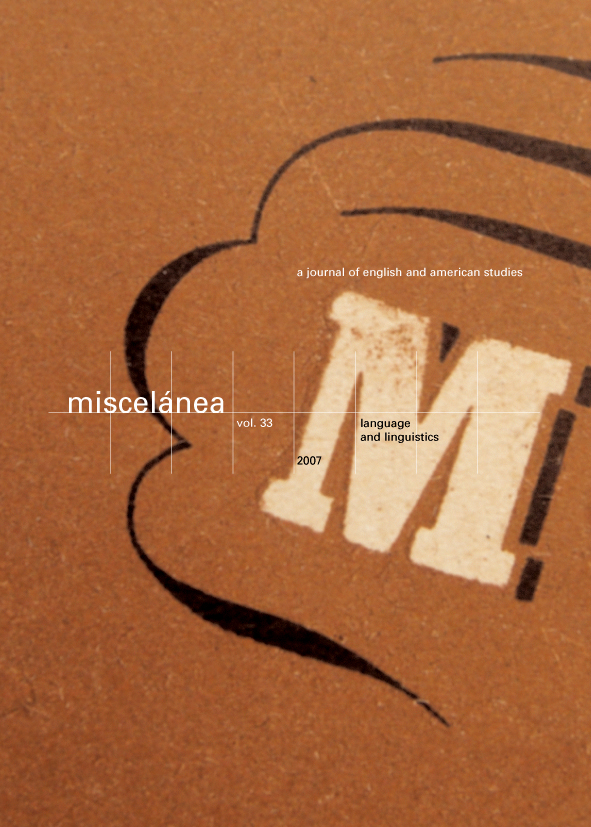Hypertextual Information Structures and their Influence on Reading Comprehension: An Empirical Study
DOI:
https://doi.org/10.26754/ojs_misc/mj.200610089Keywords:
hypertextual information structures, reading comprehension, speed reading, teaching reading, web page designAbstract
The aim of this empirical study is to evaluate information structures in hypertexts and their effect on reading comprehension. This comparison of how well students comprehend three different structures of hypertext offers new insights into the comprehension process and has the potential to inform the design of websites. In the first section of this paper, the global structure of hypertexts is discussed. In the second section, the subject of navigation within hypertext is related to the theoretical framework of schema theory. The third section describes the empirical study, in which linear, axial and networked hypertexts are used in a series of tests focusing on reading comprehension. The comprehension results are correlated to textual structure and reading time. The results indicate that axial structures are more beneficial to comprehension than networked or linearly arranged hypertext and support the readers’ understanding and memory of content better. The fourth section is devoted to implications for language teaching and outlines several activities for activating learners’ hypertextual schemata. Finally, suggestions for further research and the design of Web pages are made, pleading for displays that combine a record of the user’s path through the document with a map of currently available links.
Downloads
References
Aarseth, E. J. 1997. Perspectives on ergodic literature. Baltimore, London: The John Hopkins UP.
Balcytiene, A. 1999. “Exploring individual processes of knowledge construction with hypertext”. Instructional Science, 27: 303-328.
Brewer, W. 1987. “Schemas versus mental models in human memory”. In Morris, I. P. (ed.) Modelling Cognition. Chichester: John Wiley and Sons: 187-197.
Burbules, N. C. 1996. “Aporia and knowledge: passages of learning”. Educational Researcher, 24: 12-20.
Burbules, N. C. 1998. “Rhetorics of the Web: hyperreading and critical literacy”. In Snyder, I. (1998): 102-122.
Conklin, J. 1987. “Hypertext: an introduction and survey”. Computer. Vol. Sep.: 17-41.
Downs, R. M. and D. Stea. 1977. Maps in minds: Reflections on cognitive mapping. New York: Harper and Row.
Driscoll, M. 1994. Psychology of learning for instruction. Boston: Allyn and Bacon.
Elm, W. and D. Woods.1985. “Getting lost: A case study in interface design”. Proceedings of the Human Factors Society 29th annual meeting. Santa Monica, Ca: Human Factors Society: 927-931.
Engebretsen, M. 2000. “Hypernews and coherence”. Journal of Digital Information, Vol. 1/7: 209-225.
Gillingham, M. G. 1993. “Effects of question complexity and reader strategies on adults’ hypertext comprehension”. Journal of research on computing in education, 26: 1-15.
Guthrie, J. T. 1988. “Locating information in documents: examination of a cognitive model”. Reading Research Quarterly, 23: 178-199.
Halliday, M. A. K. and R. Hasan. 1989. Language, context, and text: aspects of language in a social-semiotic perspective. Oxford: Oxford University Press.
Hammond, N. and L. Allison. 1989. “Extending hypertext for learning: an investigation of access and guidance tools”. People and Computers, V. Cambridge: Cambridge University Press: 293-304.
Horney, M. 1993. “Case studies of navigational patterns in constructive hypertext”. Computers in Education, 20, 3: 257-270.
Hyland, K. 1999.”Talking to students: Metadiscourse in introductory coursebooks”. English for Specific Purposes, 18, 1: 3-26.
Kuhlen, R. 1991. Hypertext: ein nicht-lineares Medium zwischen Buch und Wissensbank. Berlin: Springer Verlag.
Lemke, J. L. 1998. “Metamedia literacy: Transforming meanings and media”. In: Reinking, D., M. McKenna, L. Labbo and R. D. Kieffer (eds). Handbook of literacy and technology: Transformations in a posttypographic world. Hillsdale, N.J.: Erlbaum: 283-301.
McKnight, C., A. Dillon and J. Richardson (eds.)1993. Hypertext: A psychological perspective. Chichester: Prentice Hall.
Salmeron, L. et al. 2005. “Reading strategies and hypertext comprehension”. Discourse processes, 40: 171-191.
Snyder, I. 1998. Page to screen. London. New York: Routledge.
Sperber, D. and D. Wilson. 1986. Relevance. Communication and cognition. Oxford: Blackwell.
Tolman, E. C. 1948. “Cognitive maps in rats and men”. Psychological Review, 55: 189-208.
Van Dijk, T. A. 1980. Macrostructures. Hillsdale, N.J.: Lawrence Erlbaum Associates.
Van Dijk, T.A. and W. Kintsch. 1983. Strategies of Discourse Comprehension. London: Academic Press.
Whalley, P. 1993. “An alternative rhetoric for hypertext”. In: McKnight, Dillon and Richardson (eds.) Hypertext: A psychological perspective. Chichester: Prentice Hall: 7-17.
Downloads
Published
How to Cite
Issue
Section
License
Copyright (c) 2009 Margit Reitbauer

This work is licensed under a Creative Commons Attribution-NonCommercial 4.0 International License.


